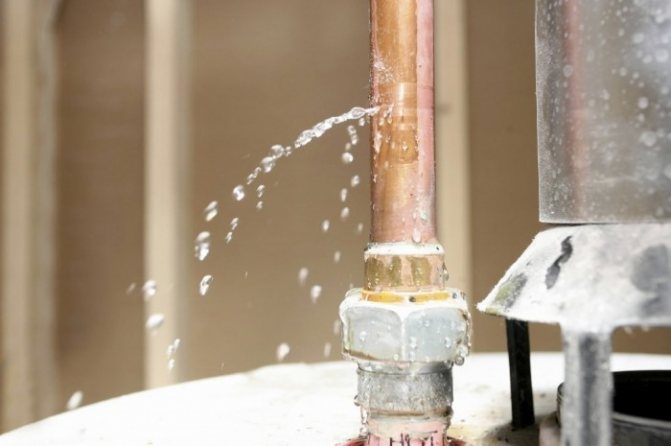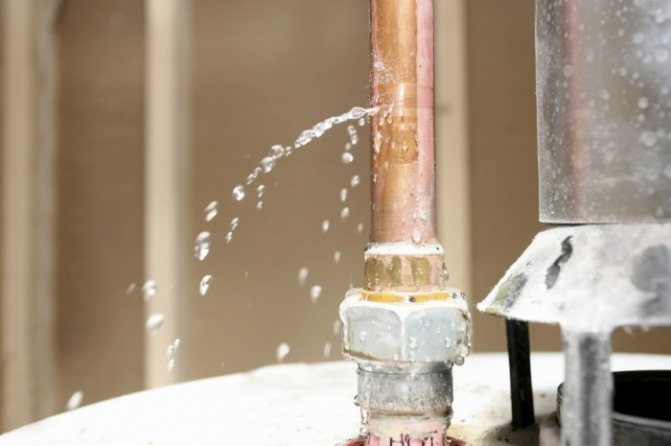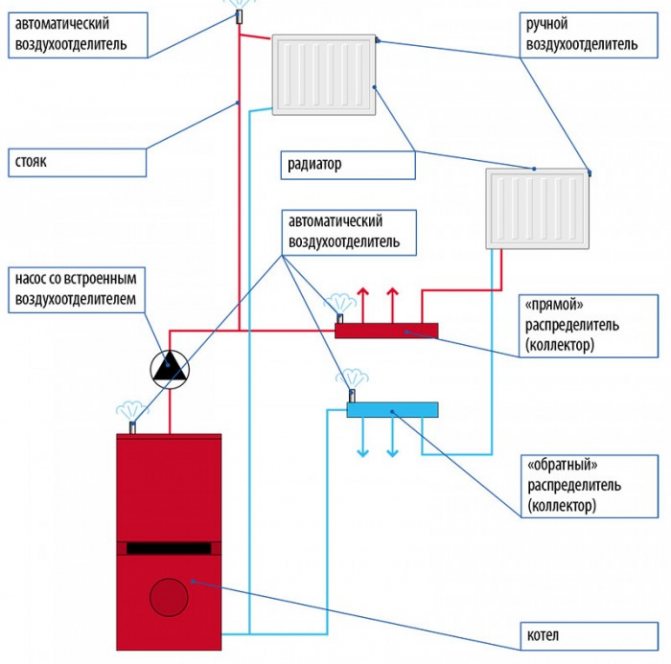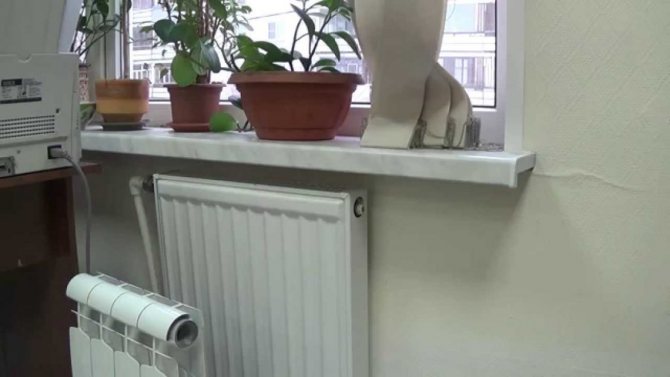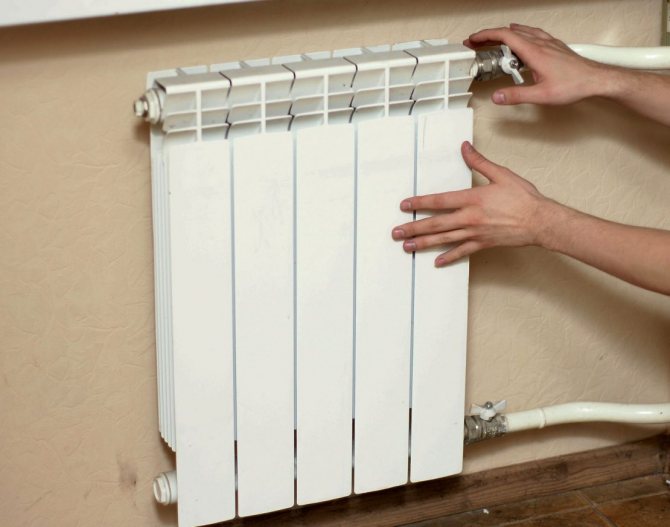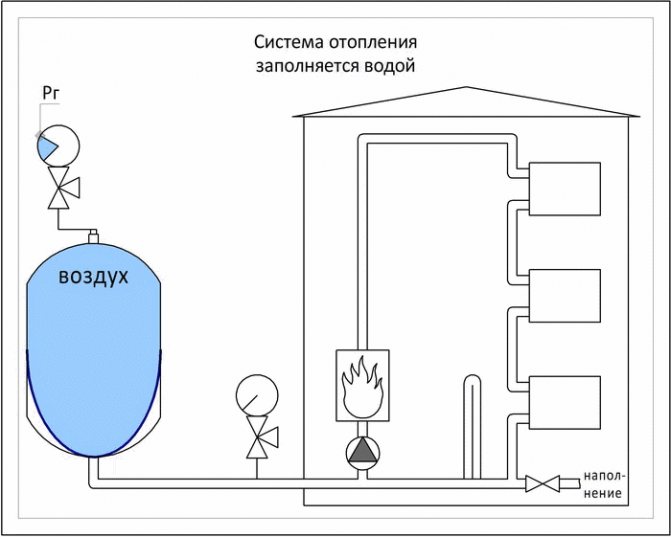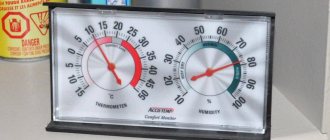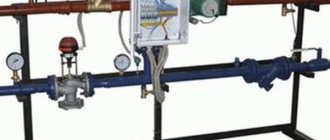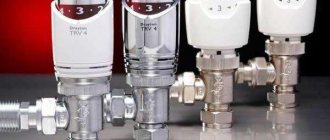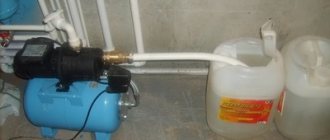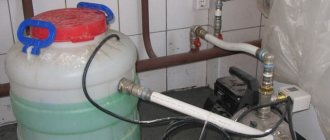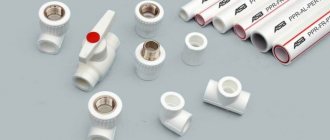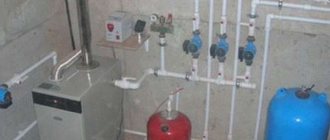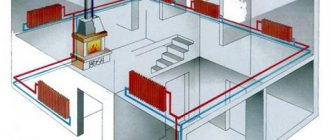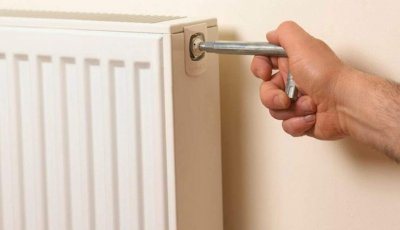
An airlock is excess air that occupies pipe diameter or most of it.
As a result of the appearance of an air barrier heat ceases to flow along the contour further.
There are several ways to get rid of an airlock in your heating system.
Odnoklassniki
Where does the airlock come from
The reasons:
- in pipes or radiators along the contour there is damage;

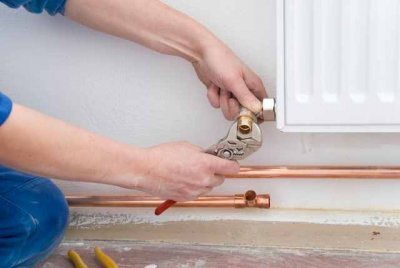
- a mistake was made at the stage mounting or even designing (most often there is an incorrect calculation or execution of a pipe slope);
- low pressure (no matter what the reason) - the space that is not occupied by water is occupied by air;
- incorrect system start into operation at the end of the summer season (a common mistake is filling the circuit with a warm or hot coolant);
- fast heating water to maximum temperature;
- absence or malfunction devices for automatic air release from pipes;
- incorrect connection of the "warm floor" - due to the complex circuit and small diameter of the pipes, this part of the circuit is the most problematic to connect.
Determination of the site of plug formation and its removal
How can you tell if there is air in the radiator? Usually, the presence of air is indicated by extraneous sounds, such as gurgling, water flow. To ensure full circulation of the coolant, it is imperative to remove this air. With a complete airing of the system, you must first determine the places of formation of plugs by tapping with a hammer on the heating devices. Where there is an airlock, the sound will be more resonant and strong. Air is collected, as a rule, in radiators installed on the upper floors.
Realizing that there is air in the heater, you should take a screwdriver or wrench and prepare a container for water. Having opened the thermostat to the maximum level, you need to open the valve of the Mayevsky tap and substitute the container. A slight hiss will indicate that air is coming out. The valve is kept open until water flows out and only then is it closed.
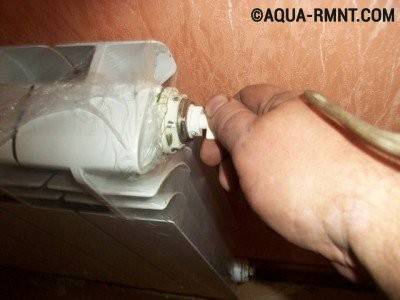

Elimination of the airlock in the heating battery with the help of the Mayevsky crane installed on it: the valve is opened with a special key or manually and kept open until water appears
It happens that after carrying out this procedure, the battery does not heat up for long or not well enough. Then it needs to be blown and washed, since the accumulation of debris and rust in it can also cause air to appear.
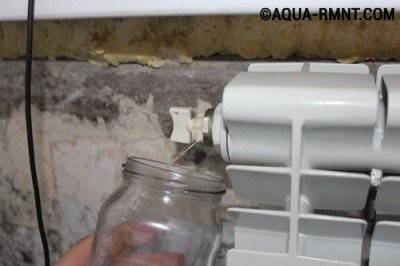

If after bleeding the air the battery still does not heat up well, try draining about 200 g of the coolant to make sure that the air lock is completely removed. If it does not help, but you need to blow out and rinse the radiator from possibly accumulated dirt
If there is still no improvement, check the filling level of the heating system. Air pockets can also form at pipe bends.
Therefore, it is important during the installation process to observe the direction and magnitude of the slopes of the distribution pipelines. In places where the slope for any reason differs from the project, air vent valves are additionally installed
In aluminum radiators, air locks are formed more intensively due to the poor quality of the material. As a result of the reaction of aluminum with the coolant, gases are formed, therefore, they must be regularly removed from the system. In such situations, it is recommended to replace aluminum radiators with devices made of better materials with an anti-corrosion coating and install air vents.In order for the heating of the rooms to be normal, before filling the heating system with water, it is necessary to timely take care of removing air from it, which prevents the normal movement of the coolant, and then in winter your house will be warm and comfortable.
How is it formed
With an illiterate gulf of the coolant (for example, from the top point), turbulence is formed: water tends downward and air - upward. In the process of movement, the liquid displaces air, if there are suitable irregularities on the inner surface, it stops in them. Gradually, the amount of trapped air increases.
Why is it important to get rid of it in time
Even a small amount of air in the system is highly undesirable, although a plus can be found here: the appearance of a plug - system malfunction signal... But there are much more troubles:
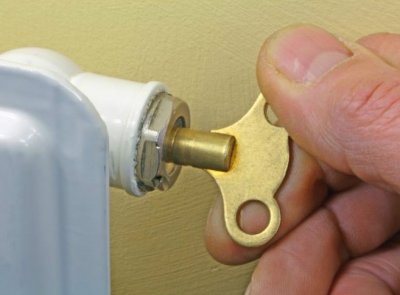

- weak heating radiators or lack thereof;
- noises, vibrations - create tangible discomfort;
- the combination of air and hot coolant leads to the appearance unwanted chemical processes, which leads to additional layering on the inner surfaces;
- part of the chemical processes entails acidity increase inside the system, which creates conditions for corrosion;
- if a circulation pump operates in the system, then its work can go idle, it will break.
How to determine the place where the air appeared
The easiest method for detecting a plug is by hearing... You need to carefully tap the battery - empty space will respond louder.
You can find suspicious places beforehand according to the degree of heating: where the coolant does not pass, there will be areas with low temperatures
Both ways do not differ in accuracy. The coolant may not pass due to a blockage of dirt and rust. This problem is solved by flushing.
How to purge the air in an apartment building
Bleeding can be done in the following ways.
Bypassing the riser for discharge
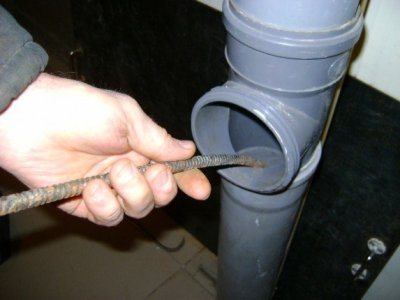

Performed housing and communal services employees. For air release, devices are installed on the upper floors.
If you cannot use them (the apartment is closed, no one is at home), you can carry out a bypass from the basement - for a two-pipe system.
The risers must be provided with dumpers... They are located after the valves. If available, you should stock up on a ball valve with a diameter like the plug.
Process:
- Risers overlap (valves).
- On one of them very slowly and carefully the plug is unscrewed. No more than 1-2 turns, so that you can feel the pressure of the water. Before turning further, you must wait until the pressure subsides.
- The plug is screwed into place ball valve with seal.
- Installed dump opens completely, then water is supplied to the second.
For a successful result, you need to see in advance how the layout of the heating plant at home is made.
It is optimal if the radiators along the contour are on the supply riser, then the installation of the second one with a relief valve on the return will solve the problem: there will be no air. When the heating devices are distributed over two risers, there is no guarantee of one hundred percent result.
If the problem is not resolved, the same actions are performed. in the opposite direction. For this, the ball valve is moved to the second riser.
Important! Screw valves do not transfer the direction of water flow that does not correspond to the arrows on the body. If so, then you have to reset the entire system.
The usual heating arrangement is - bottom... The pipelines, direct and return flow, are located in the basement. The connection between them is via a lintel on the top floor.
How to get rid of a plug using a Mayevsky crane
Small cylindrical device. Installed on top of the radiator if there is room for this in the niche. In one-story houses all radiators are equipped with it.
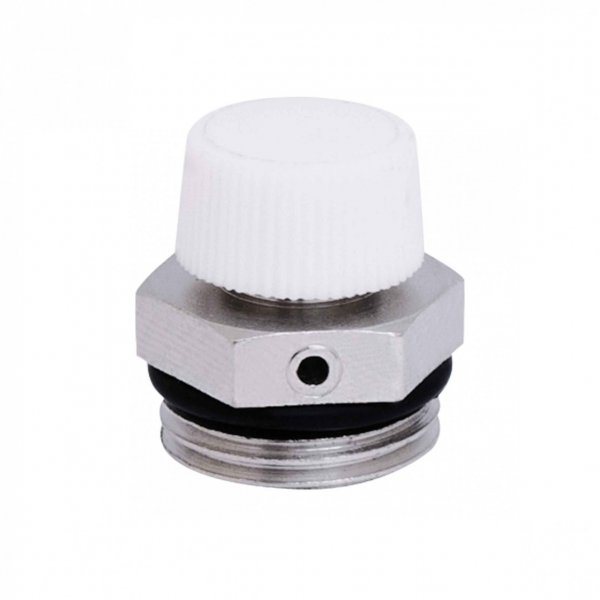

Photo 1. Crane Mayevsky for airing radiators model 1/2 SL No. 430, equipped with a sealing ring,.
If the system is vertical, then the device is installed on the top floorto release the entire riser from the air at once.
Additionally, the Mayevsky crane is installed on heating devices located below the common lower point of connection to the riser. Sometimes - on heated towel rail In bathroom. It is placed vertically through a tee, which allows you to change the position of the axis of the device.
Mayevsky's crane is very easy to operate: to release air, the valve opens and then closes. If this does not solve the problem of heating the radiator, then it will have to be cleaned.
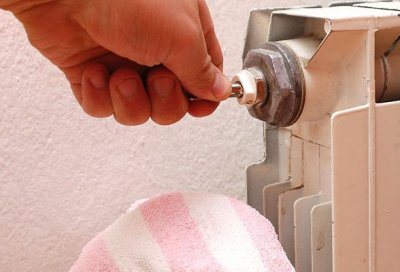

- Before venting the circulation pump is turned offif the water flow is forced.
- All objects close to the radiator move away.
- Placed under the valve basin or bucket.
- Screwdriver or wrench begin to turn until a hissing sound appears.
- When the water appeared, the tap close.
Remove with a conventional valve
The valves must be in highest points of the contour. The air is released according to the same algorithm as with the Mayevsky crane.
Kick out through the plug
This method is used if nothing is specifically set.
To use a stub, you need:
- disable riser;

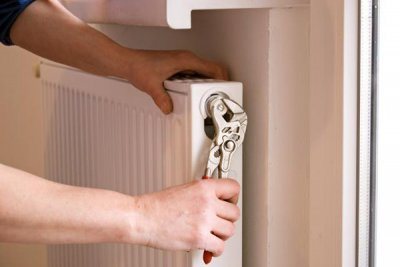
- put under the plug bucket or another container;
- if the plug is covered with paint, it softened with a solvent;
- adjustable wrench carefully and slowly turn the plug until a hiss appears, it is important not to miss this moment, because you cannot open the plug completely;
- after the hissing stops - wait the appearance of liquid;
- the plug is screwed in backif necessary, you can seal it.
Important! All manipulations are done slowly, without sudden movements.
Why is air in the system undesirable?
Air-conditioned radiators. This is a common problem with hot water heating systems. Many of us have encountered it. It is easy to check if the radiator is airy. It is enough to try whether it is evenly heated over the entire surface. If the top is cold and the bottom is warm, the radiator is not filled with water. If there is air in a part of the radiator instead of water, the thermal efficiency of the radiator is reduced and the room in which it is installed is not fully heated. Most often, radiators located on the upper floor or below the distribution network are airborne. The noisy operation of the system, although not as unpleasant as cold radiators, can also annoy tenants. Noise, crackling and bubbling from an airborne system are unpleasant to the ear. Corrosion.
Cold radiators and noisy system operation are immediately noticeable to users. Another consequence of the airing of the system - corrosion - makes itself felt only after a certain time. The air contains about 20% oxygen, which is the main cause of corrosion, as well as carbon dioxide, the presence of which in heating equipment is undesirable. An additional reason for the presence of carbon dioxide in the heating system is the decomposition of dissolved calcium and magnesium bicarbonates. Under the influence of elevated temperature, they decompose into calcium and magnesium carbonates, which are deposited in the form of a stone, as well as carbon dioxide, which can form carbon dioxide, which is corrosive from the point of view of corrosion.
Incorrect pump operation. Air not only shortens the life of the radiators and pipes, but also causes the circulation pump to malfunction. The sleeve bearings of the pump shaft are "lubricated" with water. If the flow of water is interrupted by an air lock, the phenomenon of "dry" friction occurs.In this case, the heat generated by dry friction in the bearings can damage the shaft or pump sliding rings. Therefore, when starting the pump after a long break in operation (for example, after the summer season), the system must be vented.
Removal in a house with an autonomous heating system
The generation of the gaseous form of the coolant begins when it enters the pipes. The process is intensified when heated, the air is collected under the "ceiling" of the contour.
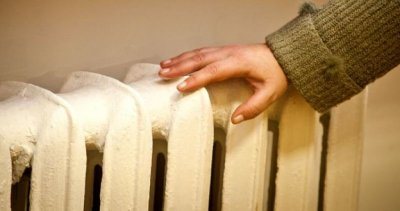

Therefore, the inclusion of a heat source always occurs only after filling the circuit and bleeding off excess air.
Removing gas invariably entails pressure drop and decrease in the amount of coolant - in the process, you need to keep the pressure and make-up supply under control.
Raise pressure and temperature
Pressure reduces the rate at which gas is released from the liquid (at constant temperature).
In the vertical system, there is upward air movement, but it can move down with water, "hang" in the stream.
Reference! In horizontal sections of the circuit, in pipes with a slope, the gas occupies the upper position. At high water velocity, the air splits up and goes to motion along unpredictable trajectories. Therefore, the filling of the system must be slow.
By manipulating pressure, you can debug the operation of the system. Common natural pressure - 1 bar. When the circuit is filled, the pressure begins to rise.
If heat is added to this, the coolant expands, which leads to an increase in pressure. Air begins to separate from water more active.
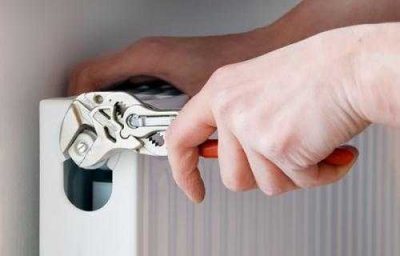

If the system is correctly designed, after filling it with a coolant, air will begin to be removed through a system of automatic valves or it will be removed manually.
The drop in pressure indicates coolant leak, increase - oh airlock (it acts like a constriction of a pipeline).
Taking into account the peculiarities of the interaction of air and water, they can be used to combat air congestion. If it is not possible to determine the location of the accumulation of air, a short-term rise in temperature and pressure will force the air in the system redistribute... The plug will either move to a place where it can be removed, or air will escape through the automatic valves.
How to expel air from the heating system
I think that many of you have repeatedly met with the fact that some kind of battery in the house heats up worse than others, or even cold. In my apartment, this phenomenon often happens with a heated towel rail, if in our riser, someone carried out repair work. The reason for this phenomenon is that air has appeared in the heating system. It usually accumulates at the highest point of the heater, displacing the coolant from this place. If too much of it accumulates there, the circulation of the coolant may stop altogether. In this case, experts say that an airlock has formed in the heating system or the system has become airy.
To restore the operation of the heating system, it is necessary to expel air from the heating system. There are several ways to do this.
If it enters a closed-type natural circulation system
The organization of heating of this type involves the removal of air through the expansion tank installed in the highest position.

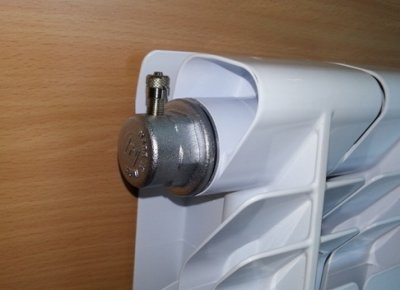
TO overflow connection the hose is connected, the possibility of pouring out the liquid is provided.- Opens low head make-up, turns off when water comes out of the hose.
- Next, air is released from each battery (plugs, Mayevsky faucet).
- After that, the coolant is added to the system. (about 2/3 of the boiler volume).
Then the boiler turns on, the radiators should start heating up.Repeat the process if necessary. When the slopes of the pipeline are observed, the air escapes by itself. If it does not work out, the coolant can be heated, then the air will come out more actively.
Airing the system - what is the reason?
Experience shows that the correct search for the cause of such a phenomenon always leads to the identification of the root cause of the occurrence of the phenomenon itself and allows in the future to simply eliminate the causes, and not the consequences. The air-conditioned heating system of a private house, regardless of which heating system belongs to open or closed, has several groups of reasons for the occurrence of this phenomenon:
- technological;
- constructive;
- mechanical.
The technological reasons for the appearance of air jams in the devices of the heating system of the house include:
- improperly carried out routine maintenance for pouring coolant into the system;
- improper operation of heating equipment;
- use of untreated water or low-quality antifreeze as a heat carrier.
Most often, hasty filling of the volume of the system with a coolant and leads to the formation of air gaps in the radiators and pipelines of the system. An avalanche-like filling leads to the filling of the main volumes with water at a rapid pace, when water cannot displace the air, but, on the contrary, clogs it in the cavities of the system. In addition, filling the volume of the system without further bleeding air during a test fire only enhances the effect.
By improper operation of the heating system, one should mean the irregularity of the furnaces, the heating agent reaching the maximum temperature, with the subsequent discharge of a part of the coolant into the expansion tank and further outside the system volume. In this mode, when the maximum temperature is reached, at which the water "boils" in the boiler and not only the coolant, but also water vapor comes out into the expansion tank, after cooling down with a decrease in the water level, an air gap is formed, drawn into the system during the subsequent temperature build-up.
Untreated tap water, simply put, that has not settled and has not released all the air contained in it during heating and circulation through pipelines, forms air bubbles that accumulate in the upper points of radiators and pipelines. Such plugs do not allow the system to "push through" hot water, significantly reducing the coolant circulation ring.
Structural reasons include reasons related to incorrect design and assembly of the entire system during construction:
- incorrectly calculated angles of inclination of pipelines;
- errors in system design;
- lack of automatic air vents and Mayevsky taps on each heating radiator;
- the absence at the highest points (as a rule, this happens when installing a closed-type heating system) of valves for bleeding air.
Mechanical reasons include the reasons that resulted from damage to the integrity of the system - cracks, depressurization of threaded connections, loose closure of taps, in general, the reasons for which air will constantly flow into the system.
Forced circulation
For dilution systems with forced circulation, you will need two people. The second makes sure that the pressure does not drop below 1 bar (the pressure is generated by a pressure pump or through the make-up from the water supply).
Important! Initially, the coolant must be cold, Heating is switched on after filling the entire heating line.
- All opens shut-off valves, excluding plums.
- Overlap all radiator taps, only the last radiators in the branches remain open.
- After starting the water supply, the main lines, boiler and expansion tank. At this stage, the air leaves the air vent at the top point of the circuit and the valve of the safety group (it is recommended to install it for boilers with any type of fuel).

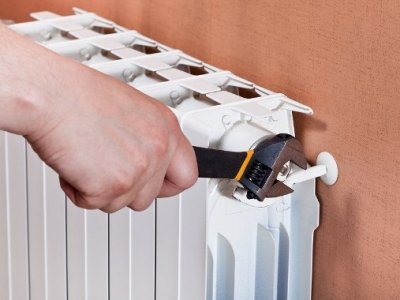
Further open taps on the first battery from the boiler, the air is released through the Mayevsky cock, then the valves are closed.- To be filled in one by one all radiators.
- From the circulation pump air is vented.
- After filling the entire circuit, the pump is switched on and the heat generator is activated. Circuit pumping takes about 15 minutes.
- After heating the lines, the valves on the radiators one by one open, you need to release air from each one again.
At the end of the procedure, the pressure should not exceed 2 bar... The underfloor heating system is filled last.
If there are several branches, they are filled one by one, air exits through the manifold valves. The filled branch is closed, heating starts after the entire system is full.
To simplify the process of squeezing air out of the system, care should be taken to have:
- Mayevsky cranes on radiators, if the heating main goes below the batteries;
- automatic valves, when the pipes go higher.
This is a complex process that takes a lot of time. However, you should not rush when carrying out work - haste, inattention can lead to the appearance wandering airlock... It will take a lot more effort to fix this problem.
Devices for air extraction
To remove air from the heating system, special manual and automatic air valves are installed on the radiators.
Mayevsky air valve
This device is designed to manually remove air from the heating system. It is installed in a free radiator manifold. The range of these devices includes valves for different diameters and cross-sections of collectors. The Mayevsky valve is a metal disc with a conical through hole. A taper-tipped screw is inserted into this hole. If the screw is unscrewed, air will escape from the system.
Instead of the Mayevsky valve, you can put an automatic drain for the radiators. It is slightly larger in size, but works in automatic mode.
Automatic air relief valve
An automatic air relief valve can be installed both directly on heating devices and in other points of the heating system. They differ from the Mayevsky valve in that they can remove air from the heating system automatically.
There are straight and angle automatic valves. They are installed at the highest points of the heating system and are included in the safety group. Also, valves are installed in problem areas where the pipeline has an incorrect slope, due to which air can accumulate there.
Lack of automatic air relief valve
The main disadvantage of automatic valves for venting air from the heating system is that the air vent is often clogged. When this happens, air either does not come out, or the valve begins to pass liquid. In this case, it must be removed and cleaned.
In order to be able to service the valve without stopping the heating system, it is paired with a check valve. In this case, a check valve is first mounted, and already an air valve on it. With this installation, the automatic valve is simply unscrewed and then put in place.
Air separator
A sophisticated and efficient device designed for autonomous systems, especially vast extent.
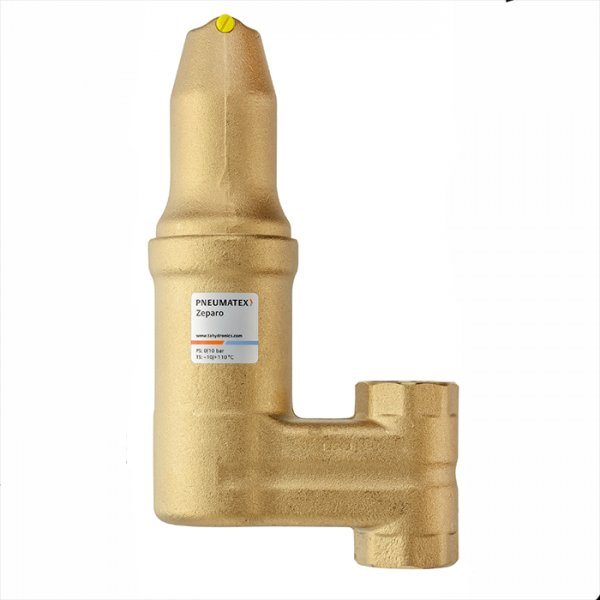

Photo 2. Air separator model ZUVL 20 for vertical pipes,.
It takes air from the water and automatically removes it. There is a top air vent... Double-acting separators are produced - for capturing air and impurities. In this case, the device is equipped with a valve to remove accumulated impurities and particles.
There is a mesh inside the device, which provokes turbulence and the appearance of air bubbles.

